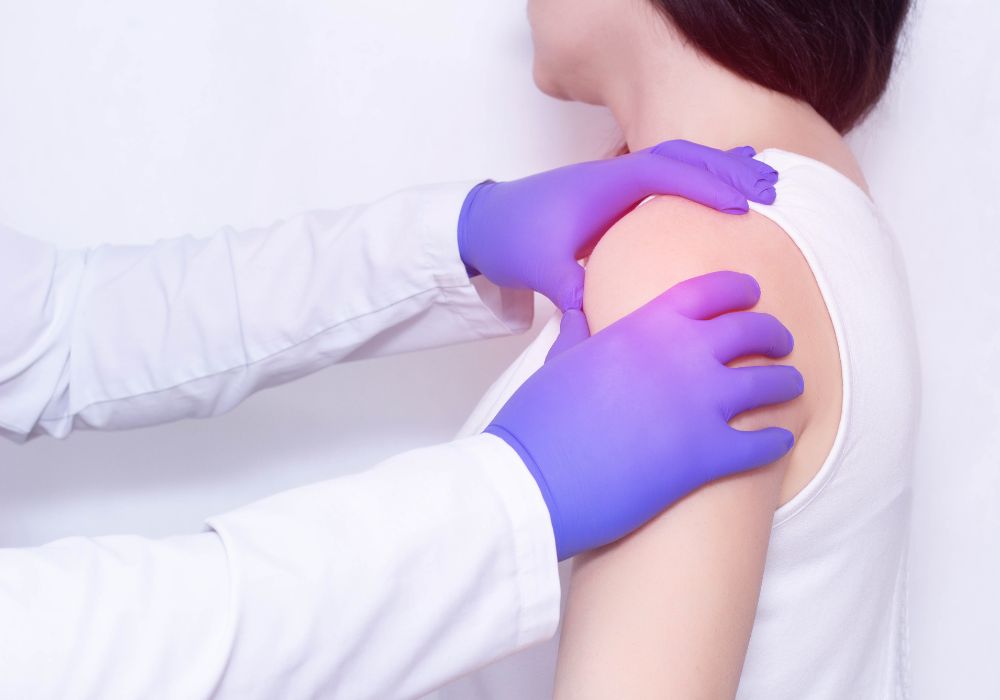Ankylosing Spondylitis
What it is?
Causes
AS commonly manifests during early adulthood, usually in the late teens or twenties, and predominantly affects men. The exact cause is unknown, but it is believed to have a genetic component, as the human leukocyte antigen B27 (HLA-B27) gene is present in a majority of individuals with AS.
The inflammation associated with AS gradually leads to the fusion of affected vertebrae, resulting in a rigid and immobile spine. This fusion can also occur in other joints, such as the hips and shoulders, causing further limitations in mobility.
Symptoms
Diagnosis
Diagnosis of AS involves a combination of evaluating symptoms, physical examination, and medical imaging (such as X-rays or magnetic resonance imaging) to assess joint damage and inflammation. Blood tests may also be performed to check for the presence of HLA-B27 gene.
While there is no cure for AS, treatment aims to alleviate symptoms, slow down the progression of the disease, and maintain functionality. Nonsteroidal anti-inflammatory drugs (NSAIDs) are frequently prescribed to manage pain and reduce inflammation. Physical therapy and regular exercise can help improve range of motion and strengthen affected joints. In severe cases, biologic medications, such as tumor necrosis factor (TNF) inhibitors, may be used to slow disease progression.
Living with AS requires ongoing management and adapting to limitations caused by the disease. Regular exercise, practicing good posture, and maintaining a healthy weight are recommended to manage symptoms. Support from healthcare professionals, such as rheumatologists or physiotherapists, can also be beneficial in developing an individualized treatment plan.
Ankylosing Spondylitis
What it is?
Causes
AS commonly manifests during early adulthood, usually in the late teens or twenties, and predominantly affects men. The exact cause is unknown, but it is believed to have a genetic component, as the human leukocyte antigen B27 (HLA-B27) gene is present in a majority of individuals with AS.
The inflammation associated with AS gradually leads to the fusion of affected vertebrae, resulting in a rigid and immobile spine. This fusion can also occur in other joints, such as the hips and shoulders, causing further limitations in mobility.
Symptoms
Diagnosis
Diagnosis of AS involves a combination of evaluating symptoms, physical examination, and medical imaging (such as X-rays or magnetic resonance imaging) to assess joint damage and inflammation. Blood tests may also be performed to check for the presence of HLA-B27 gene.
While there is no cure for AS, treatment aims to alleviate symptoms, slow down the progression of the disease, and maintain functionality. Nonsteroidal anti-inflammatory drugs (NSAIDs) are frequently prescribed to manage pain and reduce inflammation. Physical therapy and regular exercise can help improve range of motion and strengthen affected joints. In severe cases, biologic medications, such as tumor necrosis factor (TNF) inhibitors, may be used to slow disease progression.
Living with AS requires ongoing management and adapting to limitations caused by the disease. Regular exercise, practicing good posture, and maintaining a healthy weight are recommended to manage symptoms. Support from healthcare professionals, such as rheumatologists or physiotherapists, can also be beneficial in developing an individualized treatment plan.
Patient Testimonials
Orthoderm brings a wealth of knowledge, a depth of understanding, and a shared commitment to patient-centered care.

Manish Agrawal

Karishma Konwar

Hirak Jyoti Sarmah

Manish Agrawal

Karishma Konwar
Contact Dr. Anish Agarwalla
Orthoderm brings a wealth of knowledge, a depth of understanding, and a shared commitment to patient-centered care.

